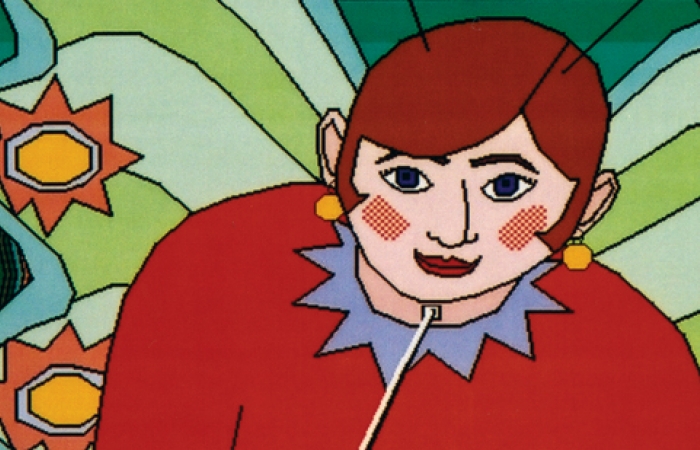
Getting a Tracheostomy: My Story

A physician with mitochondrial myopathy describes undergoing and taking care of her tracheostomy
I am writing this article about getting a tracheostomy for others with muscular dystrophies. Many patients are reluctant to have the procedure done because they fear they will lose the ability to talk or to swallow. Neither is true. And, the new trach tubes make it possible to easily take care of a tracheostomy and the tubes.
I have mitochondrial myopathy, which has caused restrictive lung disease. Over the last several years, my oxygen decreased despite the fact that my carbon dioxide remained normal. I had constant need for oxygen and spent all night trying to use a mask-delivered bilevel positive air pressure system. It didn’t work; I was chronically sleep- and oxygen-deprived. So, after several episodes of pulmonary edema and pneumonia and after discussions with my pulmonologists, we decided that a tracheostomy would make my oxygen better and my life easier.
The trach has given me back my life. I no longer need external oxygen; I can sleep using a ventilator at any time and get quality rest. I can talk using a Passy-Muir valve (PMV), which does not alter my normal voice. Although I have swallowing problems that pre-date the trach, I can emphatically say that the trach has not made them worse.
The surgical procedure
The tracheostomy was done under anesthesia, and the recovery period was not long. I needed pain medication for about two days.
I was in the surgical intensive care unit for two days, then transferred to the NEURO-ENT unit, where the respiratory therapy experts showed me how to suction, clean and change the inner cannula; change the trach collar; and use the PMV.
They also taught me how to use saline as a cough stimulant; how to do both deep and shallow suctioning procedures; and how to inflate and deflate the inner cuff.
I left the hospital after eight days, but part of that was because my lupus flared. If you do not have any complications, the usual stay is about five to six days. Everything really settles down after about two weeks.
I began to feel liberated on the third or fourth day when I could sleep all night on the ventilator. My doctors had to wake me in the morning for their rounds! I felt as though I was literally “coming up for air.”
Caring for the trach
The best part is that I can take care of my trach myself.
It has an inner cannula that is easily removed, cleaned and reused (some disposable fenestrated inner tubes may only be reused one or two times). The fenestrated trach allows me to talk with or without the PMV, and the trach itself only has to be changed every three months. This change is done by my physician in his office.
There has been no need for suctioning, although I have a portable 3-pound suction machine to carry with me if necessary. Mainly I carry an extra inner cannula, PMV and cotton-tipped swabs to clean the inner cannula.
Usually, I know when the cannula needs swab cleaning just by the way it feels. I clean any removed cannula in a mixture of water and Listerine mouthwash (which I have found works better than hydrogen peroxide). When the inner cannula is out, I use a cleaning brush to clean inside the actual trach. Occasionally, because of coughing, there is mucus along part of the outer cannula. I do not use any agent to clean inside the outer cannula.
Possible side effects
It would be unrealistic to say that there are no possible side effects to having a tracheostomy.
It's possible to have infection (such as tracheitis) and, in rare situations, tracheomalacia. Tracheomalacia is a weakening of small regions of the trachea, usually causing leakage of air around the inflated cuff. This usually requires a change to a larger and longer tracheostomy tube, but does not require removal of the trach.
For almost all problems, the trach is changed and infections are treated. I haven't had an infection for 10 months, and believe that I've really reduced the likelihood of future infections by my cleaning technique.
Final comment
Getting a tracheostomy has literally changed my life. I feel liberated from the struggle to breathe, and I look forward to many more years of useful life!
Jan Goddard-Finegold, M.D., has mitochondrial myopathy; her intercostal chest muscles, paraspinous muscles, and hip and quadriceps muscles are those most affected. She uses a power wheelchair for mobility. Her tracheostomy was performed in December 2009. A neurodevelopmental physician, Jan retired in 2002. She is married to a physician, has three grown children, two grandchildren and two very demanding dachshunds.
MDA Resource Center: We’re Here For You
Our trained specialists are here to provide one-on-one support for every part of your journey. Send a message below or call us at 1-833-ASK-MDA1 (1-833-275-6321). If you live outside the U.S., we may be able to connect you to muscular dystrophy groups in your area, but MDA programs are only available in the U.S.
Request Information